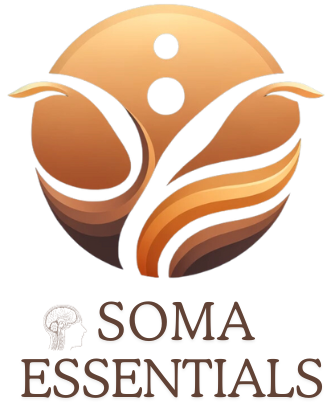Tai Chi for Mind-Body Connection and Well-Being
Welcome to our article on the somatic movement practice of Tai Chi. This ancient Chinese martial art has gained popularity in recent years for its numerous health benefits, including improved mind-body connection and overall well-being. In this article, we will explore the history and origins of Tai Chi, its principles and techniques, and how it can benefit individuals of all ages and fitness levels. Whether you are looking for a low-impact exercise or a way to reduce stress and improve mental clarity, Tai Chi has something to offer. So, let’s delve into the world of Tai Chi and discover how it can enhance your physical and mental health.
Tai Chi is a popular form of somatic movement that has been practiced for centuries in China. It combines gentle, flowing movements with deep breathing and meditation to promote mind-body connection and overall well-being. This ancient practice is often described as a moving meditation, making it a great way to improve your mind-body connection. The slow, deliberate movements require you to focus your mind on each movement and your breath, promoting relaxation and reducing stress. This can be especially beneficial for those seeking ways to improve their emotional well-being.
In today’s fast-paced world, stress and anxiety are common concerns for many people. Tai Chi offers a calming and grounding experience, allowing individuals to escape from the chaos of daily life and connect with their inner selves. By focusing on the present moment, Tai Chi can help reduce negative thoughts and promote a sense of peace and tranquility.
Aside from its mental health benefits, Tai Chi also has physical benefits. The slow and controlled movements help improve balance, flexibility, and strength. This is especially beneficial for older adults who may be at risk of falls or those recovering from injuries. By practicing Tai Chi regularly, individuals can improve their overall physical well-being and reduce their risk of injuries.
Tai Chi is a low-impact form of exercise that is suitable for people of all ages and fitness levels. It can be modified to accommodate different abilities and can even be practiced while sitting down. This makes it an ideal practice for those with chronic conditions or injuries.
Furthermore, Tai Chi is a form of somatic movement that encourages body awareness and self-discovery. By focusing on the movements and breath, individuals can become more in tune with their bodies and gain a deeper understanding of how their body moves and functions. This can lead to improved posture, coordination, and overall body awareness.
In conclusion, Tai Chi is a valuable form of somatic movement that offers numerous benefits for both the mind and body. Its gentle and meditative nature makes it an accessible practice for people of all ages and abilities. By incorporating Tai Chi into your routine, you can improve your mind-body connection, reduce stress, and enhance your overall well-being.
Benefits of Tai Chi
Tai Chi is more than just a physical exercise – it is also a mental and emotional practice. The gentle movements and focus on deep breathing can have a profound impact on both the mind and body. In this section, we will explore the various benefits of Tai Chi, including its effects on both the mind and body.
The Principles of Tai Chi
In this section, we will cover the fundamental principles of Tai Chi and how they contribute to its effectiveness.
Tai Chi is based on the concept of Qi, or life energy, which flows through the body’s meridians. The movements in Tai Chi are designed to stimulate and balance this energy, promoting physical and mental well-being.
The practice of Tai Chi also incorporates the principles of relaxation, mindfulness, and balance. By focusing on slow, deliberate movements and deep breathing, practitioners can achieve a state of calmness and inner peace.
The principle of balance is also essential in Tai Chi. As the body moves through the different postures and transitions, it maintains a constant center of gravity, leading to improved balance and coordination.
Another important principle is that of continuity. The movements in Tai Chi are fluid and continuous, with no pauses or breaks. This allows for a seamless flow of energy throughout the body, promoting a sense of harmony and connectedness.
Finally, the principle of mind-body connection is at the core of Tai Chi. By focusing on the present moment and being fully aware of each movement, practitioners can improve their overall body awareness and cultivate a deeper connection with themselves.
Somatic Psychology and Tai Chi
Tai Chi is not just a physical exercise, but also a mind-body practice that has been shown to have numerous benefits for mental health and well-being. For those interested in somatic psychology, Tai Chi can be a valuable tool for increasing body awareness and promoting self-discovery. By incorporating gentle, flowing movements with deep breathing and meditation, Tai Chi helps individuals connect with their bodies on a deeper level.
Through the practice of Tai Chi, individuals can become more attuned to their physical sensations, emotions, and thoughts. This increased awareness can lead to a better understanding of one’s inner self and promote overall well-being. Additionally, Tai Chi can help individuals release tension and stress from the body, which can have a positive impact on mental health.
Research has shown that practicing Tai Chi can improve symptoms of anxiety, depression, and stress. It has also been linked to improved self-esteem and self-confidence. By incorporating somatic principles into the practice of Tai Chi, individuals can cultivate a deeper connection with their bodies and enhance their overall psychological well-being.
For those searching for information on somatic essentials, Tai Chi is an excellent practice to explore. Its gentle movements and focus on mind-body connection make it an ideal form of somatic movement for beginners and experienced practitioners alike. Whether you are interested in somatic psychology or simply looking to improve your overall well-being, Tai Chi is a valuable tool that can aid in body awareness and self-discovery.
The Practice of Tai Chi
Tai Chi involves a series of slow, fluid movements that are performed in a sequence. These movements are often referred to as the Tai Chi form and are meant to be practiced with focused attention and mindfulness. Each movement flows into the next, creating a continuous, meditative experience. The Tai Chi form can vary in length and complexity, with some forms consisting of 13 movements while others have up to 108 movements.
The Tai Chi postures are designed to promote balance, flexibility, and coordination while also increasing body awareness. The Tai Chi stance is typically low and stable, with the knees slightly bent and the feet shoulder-width apart. This allows for a strong foundation and helps to develop leg strength and stability.
One of the key principles of Tai Chi is qi, which refers to the energy or life force that flows through our bodies. In Tai Chi, practitioners focus on cultivating and directing this energy through the body, promoting a sense of harmony and balance within. This focus on qi can also help with stress reduction and relaxation.
For beginners, it is important to start with a simple form and focus on correct posture and alignment. It is also helpful to practice in a calm and quiet environment to fully immerse oneself in the meditative experience. Gradually, more complex movements can be added as one becomes comfortable with the basics.
Tai Chi is a wonderful practice for promoting mind-body connection and overall well-being. Its gentle movements, focus on breath, and meditative aspect make it accessible to people of all ages and fitness levels. Whether you are looking to reduce stress, improve balance, or deepen your mind-body connection, Tai Chi is a valuable practice to explore.

